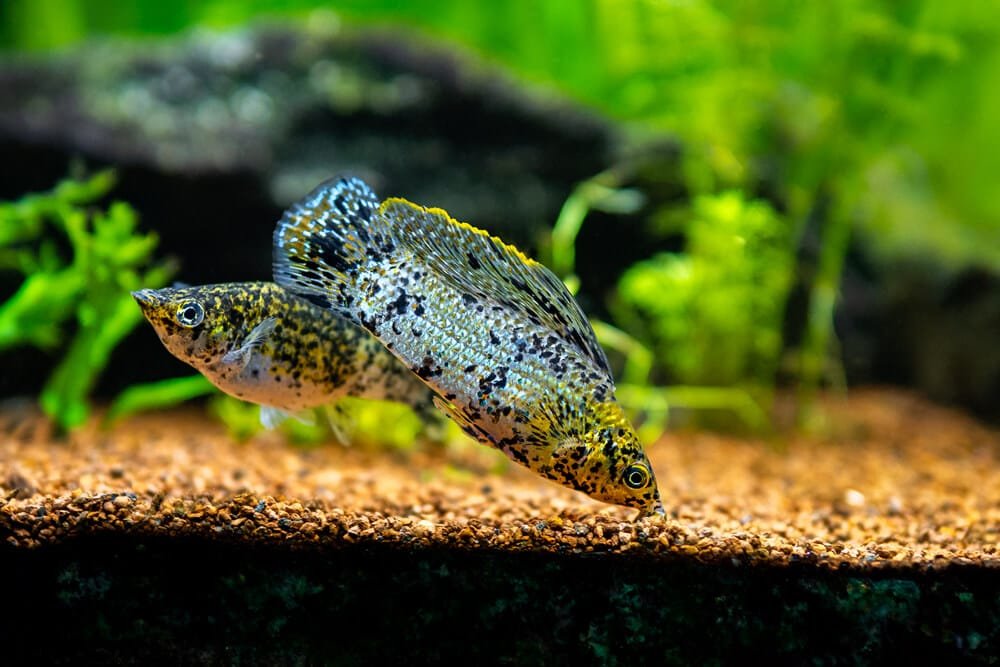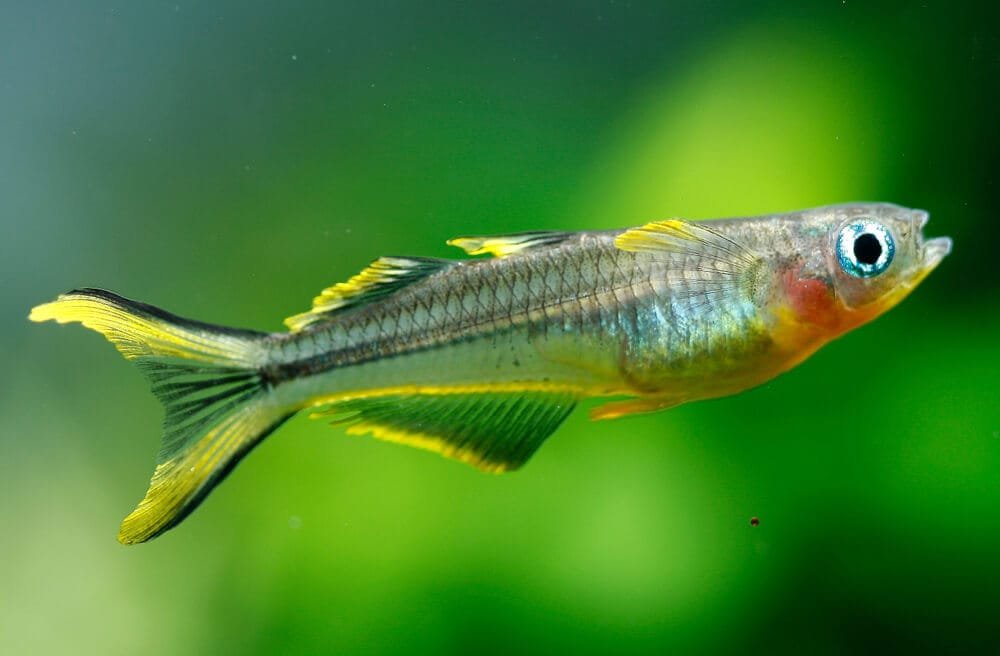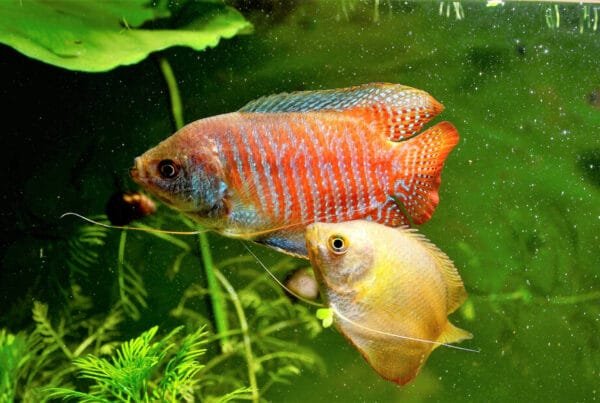Are you a fish enthusiast looking to add a touch of uniqueness to your aquarium? Look no further! “Rare Molly Fish Colors: A Guide to the Unusual and Unique Varieties” is here to help you navigate the fascinating world of rare Molly fish colors. This comprehensive guide will walk you through the definition of Molly fish, the significance of their colors, and provide a detailed overview of common and rare varieties. From the mesmerizing Albino Molly to the eye-catching Marble Molly, you’ll learn about their genetics, breeding, care requirements, and potential challenges. Join us on this exciting journey as we explore the beauty and importance of rare Molly fish colors.
Molly Fish Overview
Molly fish are a popular choice among aquarium enthusiasts for their vibrant colors and peaceful nature. These small tropical fish belong to the Poecilia genus, which includes various species like Poecilia sphenops and Poecilia latipinna. Known for their distinct dorsal fins and live-bearing ability, Molly fish are a joy to observe and care for.
Description of Molly Fish
Molly fish have a unique body shape with a slightly flattened appearance. Their fins, especially the dorsal fin in males, are elongated and can be quite showy. The body size of Molly fish ranges from two to four inches, making them suitable for community aquariums.
These fish come in a wide array of colors, patterns, and tail shapes. From common colors like black, silver, and gold dust to rare varieties such as albino, marble, and lyretail, Molly fish offer a rainbow of options for fishkeepers to choose from.
Natural Habitat
Originally from Central and North America, Molly fish are accustomed to warm, freshwater environments. In the wild, they can be found in various habitats, including rivers, streams, and freshwater marshes. These adaptable fish can tolerate a range of water conditions, but they prefer slightly alkaline water with a neutral pH.
Reproduction and Lifecycle
Unlike many other aquarium fish, Molly fish are livebearers, meaning they give birth to fully formed, free-swimming fry instead of laying eggs. This reproductive strategy contributes to their popularity among aquarists since it allows for the observation of the entire lifecycle.
Molly fish reach sexual maturity at around four to six months of age, and females can give birth to a large number of fry, sometimes up to a hundred in a single brood. The gestation period typically lasts for around four to six weeks, depending on various factors like water temperature and the individual fish.
Common Molly Fish Colors
Molly fish come in a wide range of colors, with some being more common than others. Understanding the different colors and patterns that Molly fish display can help aquarists appreciate the wide array of options available.
Explanation of Common Colors
Black Molly: Black Molly fish, as their name suggests, have a solid black coloration throughout their body. This color can range from pure black to a darker shade of gray. The contrast of their dark body against their vibrant fins creates an eye-catching appearance.
Dalmatian Molly: Dalmatian Molly fish are known for their speckled pattern, resembling the coat of a Dalmatian dog. The white or silver body of these fish is adorned with black spots, creating a striking and unique appearance.
Gold Dust Molly: Gold Dust Molly fish have a shimmering, metallic gold or yellow body with specks of black on their fins. The combination of the golden base color and the scattered black specks gives them a dazzling and glamorous look.
Silver Molly: Silver Molly fish have a lustrous silver or platinum body color. They often exhibit slight variations in shade, with some displaying a more pearlescent appearance. The simplicity of their silver coloration exudes elegance and sophistication.
Breeding Variants: In addition to the common colors mentioned above, Molly fish can also display color variations due to selective breeding. These breeding variants include colors like red, orange, and white, allowing for even more diversity in Molly fish populations.
Rare Molly Fish Colors
While common colors are widely available in pet stores and aquariums, rare Molly fish colors are often sought after by collectors and enthusiasts. These unique colorations occur less frequently in nature and require specific genetic combinations.
Definition of Rare Colors
Rare Molly fish colors refer to those color variations that are uncommon and not easily found in the general Molly fish population. These colors can occur naturally but are more frequently achieved through selective breeding by dedicated hobbyists and breeders.
Examples of Rare Molly Fish Colors
Albino Molly: Albino Molly fish, also known as white Molly fish, exhibit a complete absence of pigmentation, resulting in a pure white body. Their eyes are often red or pink due to the lack of melanin. The ethereal beauty of these fish makes them a highly sought-after and fascinating addition to any aquarium.
Balloon Molly: Balloon Molly fish are characterized by their unique body shape. They have a rounded, inflated appearance, with a pronounced belly and a shorter, compressed body. Balloon Molly fish can display various colors, adding to their charm and uniqueness.
Marble Molly: Marble Molly fish showcase a mesmerizing pattern of swirling, marbled colors throughout their body. This pattern can include combinations of black, white, gold, and other vibrant hues. Each fish has a one-of-a-kind marble pattern, making them truly captivating to behold.
Lyretail Molly: Lyretail Molly fish are named after their distinct tail shape, which resembles the elegant shape of a lyre. Their caudal fin is elongated, forming a graceful V-shape. This unique feature, coupled with their vibrant colors, makes Lyretail Molly fish a prized addition to any aquarium.
Half-Black Molly: Half-Black Molly fish have a striking coloration wherein only half of their body is black, while the other half is a contrasting color such as gold or silver. This color asymmetry adds an element of visual interest and uniqueness to these Molly fish.
Genetics of Rare Colors
The occurrence of rare Molly fish colors is largely dependent on their genetics. Genes play a vital role in determining the pigmentation and color variations observed in these fish. Specific combinations of genes contribute to the production of rare colors, and breeders often select individuals with desired traits to create new and unique color varieties.
Inheritance Patterns
Inheritance patterns for rare Molly fish colors can vary, and understanding these patterns can assist breeders in producing specific color combinations. Some rare colors follow simple Mendelian inheritance, meaning they are controlled by a single gene. Others exhibit more complex inheritance patterns, involving multiple genes or interacting gene pairs.
Selective Breeding
To obtain and maintain rare Molly fish colors, breeders engage in selective breeding practices. By carefully choosing individuals with desirable color traits and breeding them together, breeders can increase the frequency of rare colors in their fish populations. This dedicated effort ensures the availability and sustainability of these unique color variations for future generations of aquarists to enjoy.
Care and Maintenance of Rare Molly Fish
Keeping rare Molly fish requires diligent care and attention to ensure their health and well-being. From providing optimal water parameters to creating a suitable tank setup, here are some essential considerations for maintaining these unique and beautiful fish.
Water Parameters
Maintaining appropriate water parameters is crucial for the health of rare Molly fish. The ideal temperature range for keeping Mollies is between 75°F and 82°F (24°C and 28°C), while the pH level should be around 7.2 to 7.5. These fish also prefer moderately hard water with a carbonate hardness (KH) of 10-25 dKH.
Regular water testing and monitoring are essential to ensure these parameters remain stable. Any fluctuations or imbalances in water quality can stress Molly fish and make them more susceptible to disease.
Feeding Requirements
Providing a balanced and varied diet is essential for the health and vibrant coloration of Molly fish. These omnivorous fish enjoy a mix of commercial flakes, pellets, and frozen or live foods. High-quality flakes or pellets formulated specifically for tropical fish can serve as the foundation of their diet.
Supplementing their diet with occasional feedings of brine shrimp, bloodworms, or daphnia can provide enrichment and added nutritional value. It is essential to feed them appropriate portion sizes and avoid overfeeding, as excessive food can lead to obesity and health issues.
Tank Setup
Creating a suitable tank setup plays a significant role in the overall well-being of rare Molly fish. Providing an adequately sized aquarium is crucial, as overcrowding can lead to stress and aggression. A minimum tank size of 20 gallons is recommended for a small group of Molly fish.
Aquarium decorations, such as live plants and hiding spots, are essential for Molly fish to feel secure and exhibit their natural behavior. Adding floating plants can provide shade and cover, which Molly fish particularly appreciate.
Additionally, maintaining a consistent filtration system and performing regular water changes are necessary to keep the water clean and free from harmful substances. The tank should be well-maintained and free from any sharp edges or hazardous materials that could injure the fish.
Compatibility with Other Fish
When it comes to creating a harmonious community tank, it is vital to consider the compatibility of Molly fish with other fish species. Generally, Molly fish are peaceful and can coexist with a variety of other tropical fish, including tetras, guppies, swordtails, and platies.
It is important to research the temperament and requirements of potential tankmates to ensure a suitable match. Avoid keeping aggressive or fin-nipping species with Molly fish, as their flowing fins can make them targets for aggression.
Breeding Rare Molly Fish
Breeding rare Molly fish can be a rewarding and exciting experience for aquarists. By following some essential steps and providing proper care, breeders can successfully reproduce rare colorations and contribute to the preservation of these unique varieties.
Selecting Breeding Pairs
Choosing suitable breeding pairs is crucial when aiming to reproduce rare Molly fish colors. Breeders should select individuals with desirable color traits and compatible genetic backgrounds. It is recommended to avoid inbreeding and instead seek unrelated fish to maintain genetic diversity.
Breeding Process
To initiate the breeding process, separate the selected male and female Molly fish into a separate breeding tank. The tank should have appropriate hiding places like dense vegetation or breeding traps to protect the pregnant females from potential aggression.
Once the fry are born, the female can be removed, as Molly fish may eat their own young. The fry can then be raised separately in another tank or provided with floating plants or breeding nets to ensure their survival.
Caring for Fry
Caring for Molly fish fry requires attention to their specific needs. As soon as they are born, the fry should be provided with appropriate food, such as finely crushed flake food or baby brine shrimp. Frequent feeding is necessary, as the fry grow rapidly and require high-quality nutrition to develop properly.
It is important to closely monitor water parameters and maintain suitable tank conditions to ensure the healthy growth of the fry. Adequate filtration and regular water changes are critical during this stage.
Potential Challenges
Breeding rare Molly fish may present some challenges along the way. Maintaining stable water conditions, preventing aggression between fish, and providing suitable nutrition for the fry require careful attention and observation. Additionally, some rare color variations may have associated health issues or reduced fertility, which should be considered when breeding for specific traits.
Challenges in Maintaining Rare Molly Fish
While rare Molly fish colors can be a delight to observe and care for, there are certain challenges that aquarists may encounter when maintaining these unique varieties.
Genetic Health
With selective breeding for specific color traits, there is always a risk of introducing genetic weaknesses and health issues into the fish population. Maintaining genetic health requires careful selection of breeding pairs and avoiding breeding individuals with known health problems. Regular health checks and monitoring can help ensure the overall well-being of rare Molly fish.
Disease Susceptibility
Molly fish, like any other aquarium fish, are susceptible to various diseases and parasites. Stress, poor water quality, and overcrowding can weaken their immune system, making them more susceptible to infections. Regular observation, proper nutrition, and prompt action in case of illness can help minimize the risk of diseases spreading among the fish.
Environmental Stressors
Rare Molly fish may be more sensitive to changes in their environment due to their unique genetic makeup. Factors like sudden fluctuations in water parameters, temperature, or exposure to aggressive tankmates can cause stress and negatively impact their health. Providing a stable and suitable tank environment with consistent care and attention can help alleviate these stressors.
Conservation Efforts
Conservation efforts play a crucial role in preserving the natural and rare color variations of Molly fish. Both hobbyists and professional breeders can contribute to the conservation of these unique fish through various means.
The Role of Hobbyists and Breeders
Hobbyists and breeders can actively participate in the conservation of rare Molly fish colors by maintaining healthy breeding populations and sharing their knowledge and experience with other enthusiasts. By practicing responsible fishkeeping, promoting sustainable breeding efforts, and educating others about the importance of protecting these unique color variations, hobbyists play a vital role in preserving biodiversity.
Protecting Natural Populations
In addition to maintaining rare colors in captivity, it is essential to protect the natural populations of Molly fish in their native habitats. Sustainable fishing practices, raising awareness about the importance of conservation, and supporting efforts to preserve their natural habitats are crucial for the long-term survival of these fish in the wild.
Legislation and Regulations
Legislation and regulations related to aquarium trade and the export of fish can also contribute to the conservation of Molly fish. Strict regulations on collecting wild specimens and implementing sustainable practices within the industry can help preserve rare color variations and ensure the long-term viability of Molly fish populations.
Conclusion
Rare Molly fish colors present a fascinating and captivating world of unique colorations and patterns. From the ethereal beauty of albino Molly fish to the mesmerizing marbled pattern of the marble Molly, these fish offer a myriad of options for aquarists to enjoy and appreciate.
Maintaining these rare colors comes with its challenges, but with responsible fishkeeping practices and diligent care, these unique color variations can thrive in aquariums. By promoting conservation efforts, protecting natural populations, and supporting legislation that preserves biodiversity, aquarists can contribute to the long-term survival and enjoyment of rare Molly fish colors.
As fish enthusiasts, it is our responsibility to cherish and safeguard these remarkable varieties, ensuring that future generations can appreciate the beauty and diversity of Molly fish. So dive into the enchanting world of rare Molly fish colors and embrace the splendor they bring to our aquatic landscapes.






